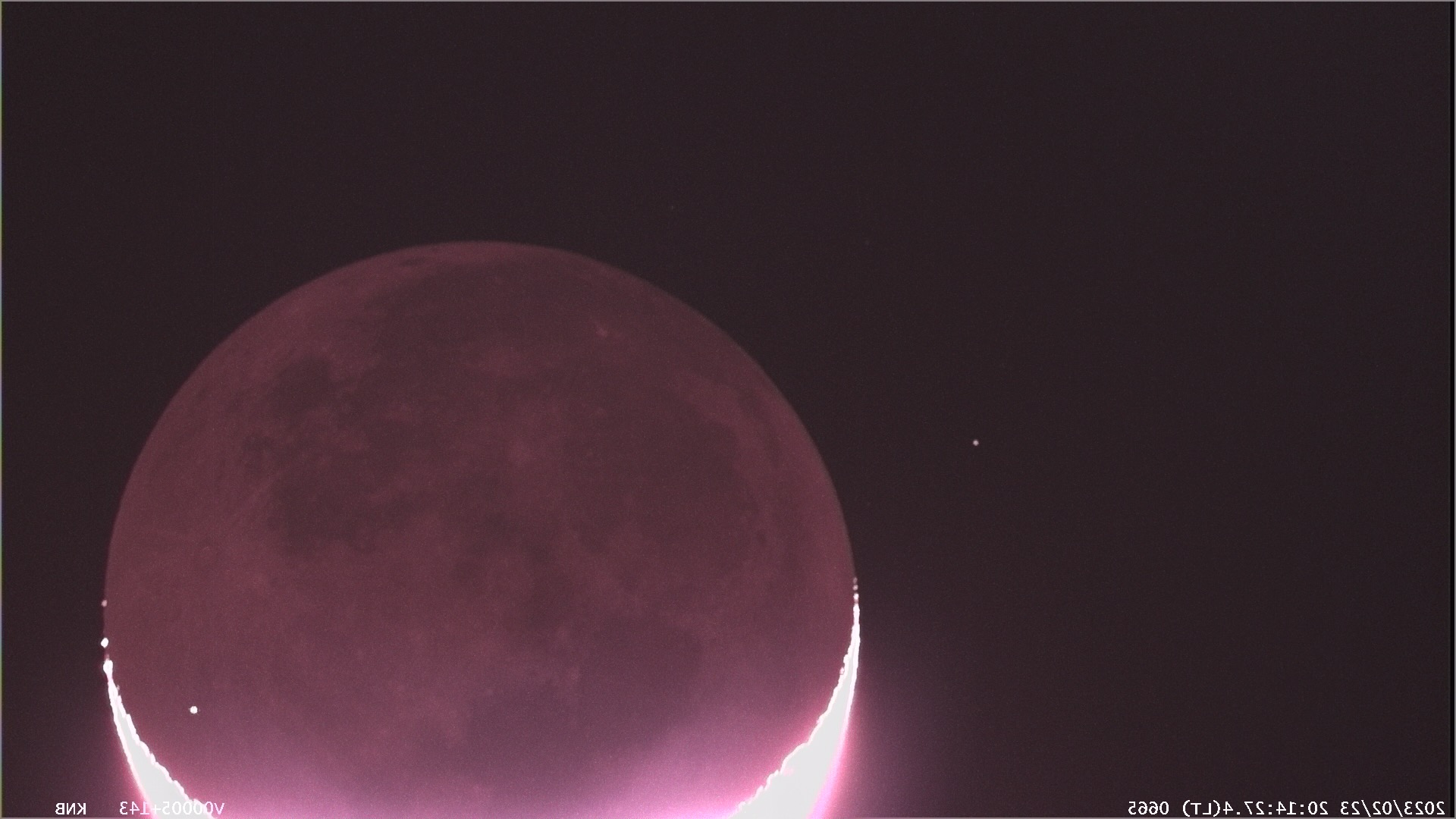Boom! Japanese astronomer catches meteorite smashing into the moon (video)
The space rock created a brief but brilliant flash that was captured from Earth.
A Japanese astronomer captured the telltale flash of a meteorite impacting the moon, causing a brief flash on our celestial neighbor's nightside.
Daichi Fujii, curator of the Hiratsuka City Museum, recorded the event using cameras set to monitor the moon.
The time of the flash was 20:14:30.8 Japan Standard Time (7:14 a.m. EST, or 1114 GMT) on Feb. 23. The meteorite appears to have struck near Ideler L crater, slightly northwest of Pitiscus crater, Fujii said.
Related: What are asteroids?


Need a telescope to see the moon up close? We recommend the Celestron Astro Fi 102 as the top pick in our best beginner's telescope guide.
Meteors travel on average at around 30,000 mph (48,280 kph), or 8.3 miles per second (13.4 km/s). Their high-velocity impacts generate intense heat and create craters, while also giving out a brilliant flash of visible light. Moon impacts can be seen from Earth, as captured above, if they are large enough and occur in an area during lunar nighttime facing Earth.
The newly created crater could be around a dozen meters (39 feet) in diameter and may eventually be imaged by NASA's Lunar Reconnaissance Orbiter or India's Chandrayaan 2 lunar probe, Fujii said.
私の観測史上最大の月面衝突閃光を捉えることができました!2023年2月23日20時14分30.8秒に出現した月面衝突閃光を、平塚の自宅から撮影した様子です(実際の速度で再生)。なんと1秒以上も光り続ける巨大閃光でした。月は大気がないため流星や火球は見られず、クレーターができる瞬間に光ります。 pic.twitter.com/Bi2JhQa9Q0February 24, 2023
While meteors collide with Earth every day, the vast majority of these burn up completely on contact with the atmosphere. The moon, however, has only a very tenuous exosphere, meaning meteors that would not reach Earth's surface commonly impact the moon, creating its crater-covered appearance. These rocks constantly pound the lunar surface, sometimes breaking it right down to fine particles, or lunar soil.
Get the Space.com Newsletter
Breaking space news, the latest updates on rocket launches, skywatching events and more!
Capturing these events also has science value, helping scientists learn the rate of impacts on the lunar surface, which is all the more relevant with the U.S. and other countries preparing to send astronauts to the moon.
Follow us on Twitter @Spacedotcom or Facebook.
Join our Space Forums to keep talking space on the latest missions, night sky and more! And if you have a news tip, correction or comment, let us know at: community@space.com.

Andrew is a freelance space journalist with a focus on reporting on China's rapidly growing space sector. He began writing for Space.com in 2019 and writes for SpaceNews, IEEE Spectrum, National Geographic, Sky & Telescope, New Scientist and others. Andrew first caught the space bug when, as a youngster, he saw Voyager images of other worlds in our solar system for the first time. Away from space, Andrew enjoys trail running in the forests of Finland. You can follow him on Twitter @AJ_FI.
-
billslugg Well, since there is no air on the Moon, the object did not start glowing until it actually touched the surface. That would make it a meteorite, not a meteor.Reply -
Helio The convention, I thought, was to label them meteoroids (or the larger asteroids) that smash into the Moon. Anything left would be the meteorite.Reply
Otherwise, at what distance above the surface to they get the name change? It's like calling a tadpole a frog. :) -
billslugg I believe a meteoroid is floating around in space, a meteor is burning in the atmosphere and a meteorite has touched the ground.Reply -
Helio Reply
Ok, but a pedantic would argue that “smashing” is a process for a meteoroid. Once smashed, it’s a meteorite.billslugg said:I believe a meteoroid is floating around in space, a meteor is burning in the atmosphere and a meteorite has touched the ground.
Ready-mix must harden before becoming concrete, though many ignore this view in most conversations. -
billslugg An object in the process of deceleration is a meteor, having touched the surface is a meteorite. Therefore having touched the Moon and decelerating with a brilliant flash, the object is in a superposition of states. It is both meteor and meteorite at the same time.Reply -
joe3eagles With the higher frequency of impacts on the moon relative to Earth, I wonder how the possibility of multiple impacts on a permanent facility would be mitigated.Reply -
Harry Costas It's nice to see meteor hitting the moon rather than hitting us.Reply
Meteorite is the rock and when it's in motion it becomes a meteor. -
Sean D Reply
I'm okay with that so long as what the ready-mix hardens into isn't called a "cement" sidewalk!Helio said:Ok, but a pedantic would argue that “smashing” is a process for a meteoroid. Once smashed, it’s a meteorite.
Ready-mix must harden before becoming concrete, though many ignore this view in most conversations.









